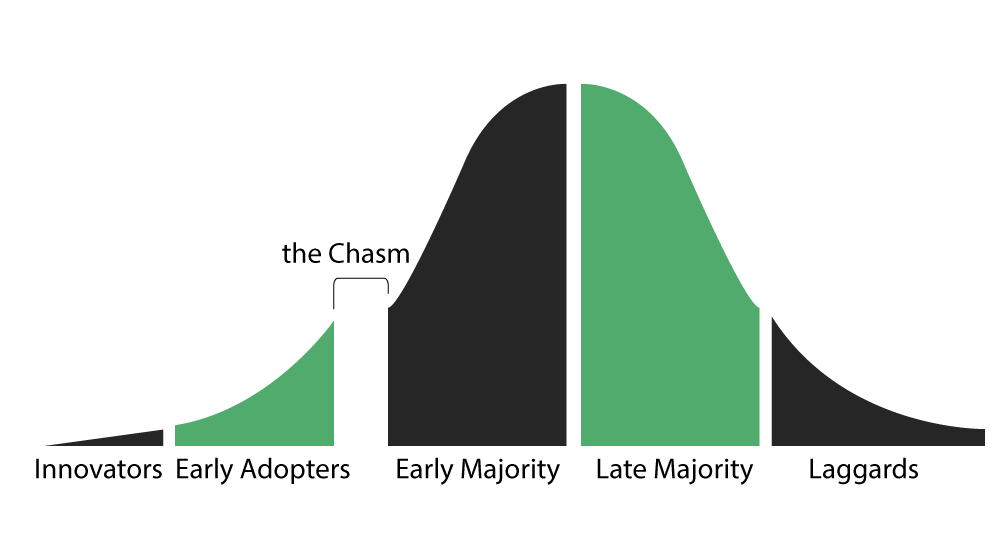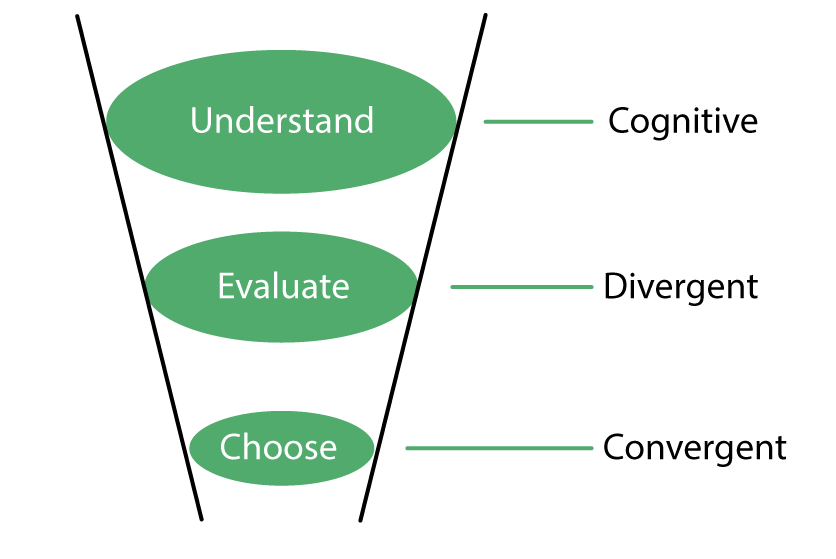In the following post, we will define what a heuristic is, what is a conversation and why markets are conversations, what you need to determine to converse with the right person and what are the critical elements of strategic sales to set up when you are in front of a potential customer company.
Let’s start with a brief definition: what is a heuristic?
What is a heuristic?
According to Wikipedia, a heuristic is a problem-solving approach that relies on intuition, which moves to the temporary state of circumstances by not following a clear and defined path. Therefore, it is a progressive path that, step by step, helps generate new knowledge or solutions. It helps to look for something. Therefore, a heuristic process does not have a concrete road, but it is precise during the road that generates a new road: a process of exploration. For example, you can enter a forest, take your first steps, and then, with caution, choose the way to go: you create a road to go. A path that can change that can be retracted backward or that can continue to a goal when a goal exists.
Conversations as a process of exploration
Sometimes conversations are just like authentic explorations. Just like explorations, even some conversations have a beginning, what can be called a first step, and then proceed to look for their way to a goal. A goal that sometimes exists and sometimes doesn’t. Many conversations can be compared to the heuristic process every day, every hour, and every minute, especially the first conversations with potential clients in B2B business conversations. For this reason, the strategic sale suggests criteria and methods for better management of these conversations: to find the right way to draw a path that can improve sales performance.
Conversations in new business
As previously described, some conversations are a heuristic process: an exploration. In a new business conversation, plausibly developed by a seller and one or more people for the purchasing system of the buyer, we often start from a theme prepared by the seller, which could be proactive or reactive to a request received from the buyer, and then drift into the great sea of increasingly diverse topics. We start from a topic but then, during the conversation, we move from one topic to another, going to territories that are sometimes little explored: it has happened to everyone, and it happens constantly. Such a conversation when it starts, hardly you know where it will take you.
How to drive a conversation with strategic sales
Among the dictates of strategic sales, there are suggestions to help in building a dialogue. In this article, we would like to focus on the following aspects
- The point of departure
- The power of questions
- Crossing the Chasm
- What stage is the interlocutor in
The initial state: the basis of the strategic sale
As a first suggestion, at the beginning of a conversation, it is decisive to try to understand what condition our interlocutor is in. The strategic sale defines three possible starting states:
- The interlocutor wants to get something
- The interlocutor seeks to improve something
- The interlocutor wants to avoid something
According to the definition of this initial state, the conversation will be able to trace different paths. The sales approach will be different, and if you were in the presence of a complex purchasing system, you could guess the process of adopting the criteria of potential buyers.
In addition, always in terms of starting status, it is interesting to note that there are three conditions for which a buyer could be more inclined to purchase. These conditions are all necessary for parallel:
- Presence of a problem to be solved
- Having a budget
- The person I talk to must be from the decision-making system
It will be difficult to close the deal in the absence of one or more of these conditions.
The power of questions
A conversation, especially in commercial negotiation, is defined by words and many aspects of nonverbal communication. By paying attention to topics related to verbal communication, an effective way of building a conversation and a way to this conversation is undoubtedly to direct the conversation through questions. Asking and listening is thus the first step to giving birth to an idea in one’s interlocutor: to create a road that defines the conversation. To deepen this topic related to questions, here is a blog article: The power of questions in a sales negotiation.
Crossing the Chasm
According to the strategic selling dictates in a business conversation, it is always important to keep in mind that in case of a potential acquisition of a product or service by potential buyers, the seller will always be in an asymmetric position in terms of information. The seller knows the product or service they are proposing: the acquirer may not know the proposed product or service, or they may not know the proposed product or service at all. For this reason, the acquirer is in the process of adoption: a product or even just information. To help understand the dynamics of this process, the thought expressed by Geoffrey A. Moore in his book Crossing the Chasm is helpful. Moore argues that any product adopted will have to go through a process to pass from the first users to becoming a mass market. Moore then argues that every product will have to pass through a more delicate phase, especially if it is an innovation called “Chasm.” The moment when the product might lose its chance of success. The goal of a conversation is to understand what stage of adoption the acquirer is in, even if with only one interlocutor.
Before going into detail, a step back to introduce the stakeholders:
- Innovators: customers willing to take risks with new products. They seek innovation and are the first to purchase a new product.
- Early Adopters: individuals or companies who use a new product, innovation, or technology before others. Early adopters may pay more for the product than later adopters but accept the higher cost to improve efficiency, reduce costs, and increase their market share.
- Early majority: customers who purchase new technology after innovators and early users have demonstrated the benefits
- Late majority: penultimate customer segment to adopt innovative technology. The late majority is typically older, less affluent, and educated than the early segments in the technology adoption lifecycle.
- Laggards: consumers who avoid change and do not adopt new technology until all traditional alternatives are no longer available. The group is primarily concerned with reliability, low cost, and ease of use.
Once the stakeholders are defined, the adoption process over time is typically illustrated as a “bell curve” distribution.

As you can see, the process is linear in its growth and decrease. Only the “Chasm” phase interrupts this harmony.
For this reason, knowing which phase of adoption your interlocutor is located in can give you an advantage in a conversation, helping you arrange the exchange of information better and helping the seller choose which information to share.
At what stage is the interlocutor: what does the market think, and how does it choose?
In the previous paragraph, we defined how the adoption process works within the strategic selling processes and what its phases are. In this paragraph, we will instead deal with the stages of choice. Therefore, a viewer will need to define which phase of adoption and choice a buyer is in. First, let’s try to determine the stages:
- Cognitive phase: where you gather information, even in no particular order, but you haven’t yet developed a clear idea of what you want to do with your innovation,
- Divergent phase: you start to collect information on different solutions for your innovation,
- Convergent phase: you can rationally decide on the solution that best fits the problem or what you want to achieve.

Given these aspects, it is crucial for a seller to know the buyer’s status to convey the conversation and take advantage of the information.
In conclusion
As defined in 1999 by David Weinberger in the Cluetrain manifesto, “Markets are conversations,” but, as previously exposed, new business conversations, especially in B2B, are heuristics. Therefore, the previous post aims to help define a path: a road within the forest.
Therefore, strategic selling is analyzing how one’s proposal intercepts the evaluation criteria, the stage, and the expectations of a potential client, configuring them in a helpful time frame to continue the conversation.






